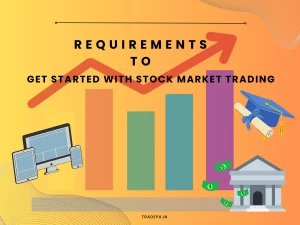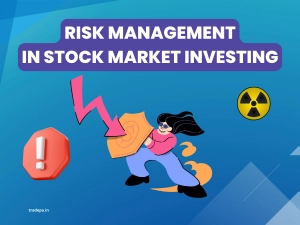How Moving Averages Predict Market Moves

Moving averages, a basic tool in technical analysis, play a pivotal role in interpreting market trends and making informed trading decisions. These indicators smooth out price fluctuations, revealing underlying patterns that noise might obscure. Traders often rely on moving averages to provide a clear, visual representation of a security's price movement over a specified period.
The Role of Moving Averages in Market Prediction
Beyond their smoothing effect, moving averages are instrumental in identifying trends, gauging market volatility, and generating powerful signals through crossovers. They serve as compasses, guiding traders through the complex terrain of financial markets and offering insights that can significantly enhance decision-making.
Foundation of Moving Averages
The Simple Moving Average (SMA) is a foundational tool in technical analysis. It operates on a straightforward principle: it calculates the average of a set number of data points over a specified period. This process effectively smoothens the jagged peaks and valleys of price movements, offering traders a clear, bird's-eye view of the overall trend.
Unlike its counterparts, SMA treats all data points equally, providing a balanced representation of price behavior. Due to its inherent stability and less sensitivity to short-term fluctuations, the SMA is often favored for long-term trend analysis and is a reliable anchor in deciphering market trends. Its simplicity and ability to filter out noise make it an essential component in the toolkit of traders and investors seeking a broader perspective on asset price movements.
Imagine you're looking at a rollercoaster ride, but instead of feeling every twist and turn, you're smoothing it out in your mind. SMA does something similar with stock prices. It takes a group of prices over a period, adds them up, and then divides them by how many there are. This gives you an average that helps you see the general trend, ignoring the small ups and downs.
The Exponential Moving Average (EMA) is a dynamic and responsive tool in the field of technical analysis. Unlike its counterpart, the Simple Moving Average (SMA), the EMA places a greater emphasis on recent data points, making it highly sensitive to current market conditions. This means that the EMA reacts swiftly to changes in price, offering traders a more immediate reflection of market trends.
It's like having a radar focused on the present moment, giving extra weight to what just happened. This responsiveness makes the EMA particularly popular among traders looking to capture short-term price movements and act promptly on market shifts. By giving priority to the most recent data, the EMA offers a clearer and more nuanced view of the evolving market landscape, enabling traders to make timely and informed decisions.
Picture a radar that's more focused on what's happening right now. EMA gives extra attention to the most recent prices. It's like saying, "What happened just now matters a lot, and what happened a while back matters a bit less." This makes it react faster to changes in the market.
The Weighted Moving Average (WMA) introduces a customized approach to analyzing price data in technical analysis. WMA differs from the above Simple Moving Average and the Exponential Moving Average by assigning varying levels of significance, known as weights, to individual data points. This means that specific prices have more influence on the average than others. It's akin to saying, "These prices hold more significance, so let's pay extra attention to them." This level of customization allows traders to focus on specific market dynamics or events that carry greater weight in their decision-making process.
The WMA empowers traders to tailor their analysis to their unique perspectives and preferences, providing a more specialized and potentially insightful view of price movements. This adaptability makes the Weighted Moving Average a valuable tool for traders seeking to fine-tune their strategies to align with specific market conditions and trading objectives.
Think of this as a customized view where you can decide which prices are more important. Some prices get a more significant say in the average. It's like saying, "These prices are more significant, so let's pay extra attention to them." This can be useful when you have specific reasons to believe certain data points carry more weight.
Differences between moving averages
| Aspect | SMA (Simple Moving Average) | EMA (Exponential Moving Average) | WMA (Weighted Moving Average) |
|---|---|---|---|
| Calculation | Takes the average of a set number of data points over a specified period. | Gives more weight to recent data points, making it more responsive to current market conditions. | Assigns different levels of importance or weights to each data point. |
| Sensitivity to Recent Data | Less sensitive to recent price changes, as it treats all data points equally. | Highly sensitive to recent price changes due to its focus on the most recent data. | Sensitive to recent data, but the degree of sensitivity depends on the assigned weights. |
| Smoothing Effect | Provides a smoother representation of price movement, filtering out short-term fluctuations. | Offers a smoother line compared to SMA, but adapts more quickly to recent price changes. | Provides a smoothed line similar to EMA, with the degree of smoothing influenced by the assigned weights. |
| Lagging Effect | Has a greater lag in response to price changes, which can be an advantage in stabilizing erratic data. | Responds more quickly to recent price changes, potentially providing earlier signals. | Can have varying levels of lag, depending on the weights assigned. |
| Popular Use | Commonly used for long-term trend analysis and reducing noise in price data. | Preferred by traders seeking to capture short-term price movements and react swiftly to market changes. | Used when certain data points are deemed more relevant, allowing traders to focus on specific market dynamics. |
Each type has its strengths, and traders choose based on what they're trying to achieve. SMA gives a broad view, EMA reacts quickly to changes, and WMA lets you highlight specific points that matter more to you.
Calculating Moving Averages

Calculating a moving average involves summing up a set of data points and dividing by the number of points. This provides a smoothed representation of price movement, revealing trends that daily fluctuations might otherwise obscure.
Choosing the Right Period:
Selecting the appropriate period for a moving average is a critical decision. Shorter periods, like 10 or 20 days, offer rapid responsiveness to recent price changes, making them suitable for short-term traders. Conversely, longer periods, such as 50 or 200 days, provide a broader view, ideal for long-term investors seeking to identify overarching trends.
Types of Moving Averages
Short-term moving averages
Short-term moving averages, often referred to as STMA, are an essential component of technical analysis traders use to gain insights into recent price trends. These moving averages are calculated by taking the average of a relatively small set of data points over a defined period, ranging from a few days to a few weeks. Due to their shorter time frame, STMAs are highly responsive to immediate market changes, providing a timely reflection of current price movements. They act like a close-up lens, allowing traders to zoom in on the finer details of market activity. This responsiveness makes short-term moving averages particularly valuable for traders who seek to capture quick price movements and react promptly to shifts in market sentiment. By focusing on recent data, STMAs offer a dynamic tool for traders to make informed decisions in a rapidly changing market environment.
Long-term moving averages
Long-term moving averages, often referred to as LTMA, are vital tools in the arsenal of technical analysts and traders. These moving averages are computed by averaging a larger set of data points over an extended time frame, commonly spanning several weeks to several months. Because of their broader scope, LTMA provides a more comprehensive view of the overall trend and is less susceptible to short-term fluctuations. Think of them as a wide-angle lens, offering a panoramic view of market activity. This characteristic makes long-term moving averages especially valuable for investors with a more extended time horizon interested in identifying major trends and avoiding getting caught up in the day-to-day fluctuation of the market. By smoothing out short-term volatility, LTMA offers a stable reference point that helps traders discern the underlying direction of an asset's price movement.
Short-term moving averages track recent price movements, offering a granular view of market activity. Long-term averages, on the other hand, smooth out short-term fluctuations, providing a broader perspective on the overall trend.
Using Moving Averages as Trend Indicators
Identifying Trends with Moving Averages
- Bullish Trends: A rising moving average signifies an uptrend, indicating that the security's price is generally increasing. This is a bullish signal, suggesting potential buying opportunities.
- Bearish Trends: Conversely, a falling moving average indicates a downtrend, signifying the price generally decreasing. This is a bearish signal, hinting at potential selling opportunities.
Significance of Trend Confirmation
While moving averages offer valuable insights, confirming trends through other indicators or analytical tools can provide added confidence in decision-making.
Moving Averages and Market Volatility
Smoothing Price Movements with Moving Averages
Moving averages act as a filter, smoothing out price movements' jagged edges, allowing traders to focus on the broader trend.
Navigating High Volatility Markets
In market turbulence, moving averages offer a stabilizing force, providing a clearer picture of the underlying trend amidst the chaos.
Moving Average Crossovers:
Golden Cross
The Golden Cross is a signal indicating a bullish trend, it happens when a short-term moving average surpasses a long-term moving average. This event signals a shift in momentum, indicating a potential bullish trend reversal.
Death Cross
Conversely, a Death Cross transpires when a short-term moving average crosses falls beneath a long-term moving average. This signals a potential bearish trend reversal, prompting caution among traders.
Strategies for Utilizing Crossovers
Traders often employ crossovers as entry and exit signals. For instance, a Golden Cross might prompt a buy order, while a Death Cross may trigger a sell order. Combining crossovers with other indicators can further refine these strategies.
Combining Moving Averages for Precision
Two-Moving Average Strategy
The Two-Moving Average Strategy involves using two moving averages of different periods. When the short-term average exceeds the long-term one, it generates a buy signal. Conversely, when the short-term average surpasses the long-term one, it triggers a sell signal.
Triple Moving Averages
This strategy takes the precision a step further by introducing a third-moving average, providing an even clearer indication of market trends. By considering the interplay between three averages, traders gain enhanced predictive power.
Backtesting and Analyzing Historical Data

Backtesting involves testing and evaluating a trading strategy using historical data to assess its effectiveness. For moving averages, this process helps fine-tune parameters and gain confidence in their predictive abilities.
Implementing Moving Averages in Backtesting
When conducting backtests, it's crucial to consider the chosen moving average type and period. This ensures the strategy aligns with the specific market conditions and assets being analyzed.
Common Pitfalls in Using Moving Averages
Over-Reliance on Moving Averages
While moving averages are invaluable tools, relying solely on them can lead to oversights. Complementing their insights with other forms of analysis is essential to make well-rounded trading decisions.
Adapting to Different Market Conditions
Market dynamics are ever-changing. What works in a trending market may not yield the same results in a ranging or highly volatile one. Flexibility in approach is key to successful implementation.
Practical Tips for Effective Implementation
Setting Optimal Time Frames
Selecting the correct time frame for moving averages hinges on the trading style and goals of the individual. Shorter periods suit day traders, while longer ones cater to investors with a more extended outlook.
Integrating Moving Averages with Other Indicators
Moving averages are most potent when used with other technical indicators like RSI, MACD, or Bollinger Bands. This synergy provides a more comprehensive view of market conditions.
Conclusion
In conclusion, by mastering the intricacies of moving averages, traders equip themselves with a powerful tool to navigate the complexities of financial markets, making more informed decisions.
Integrating moving averages into a well-rounded trading strategy provides a solid foundation for success, offering clarity in the face of market uncertainties. With diligence and adaptability, traders can harness the predictive power of moving averages to their advantage.








